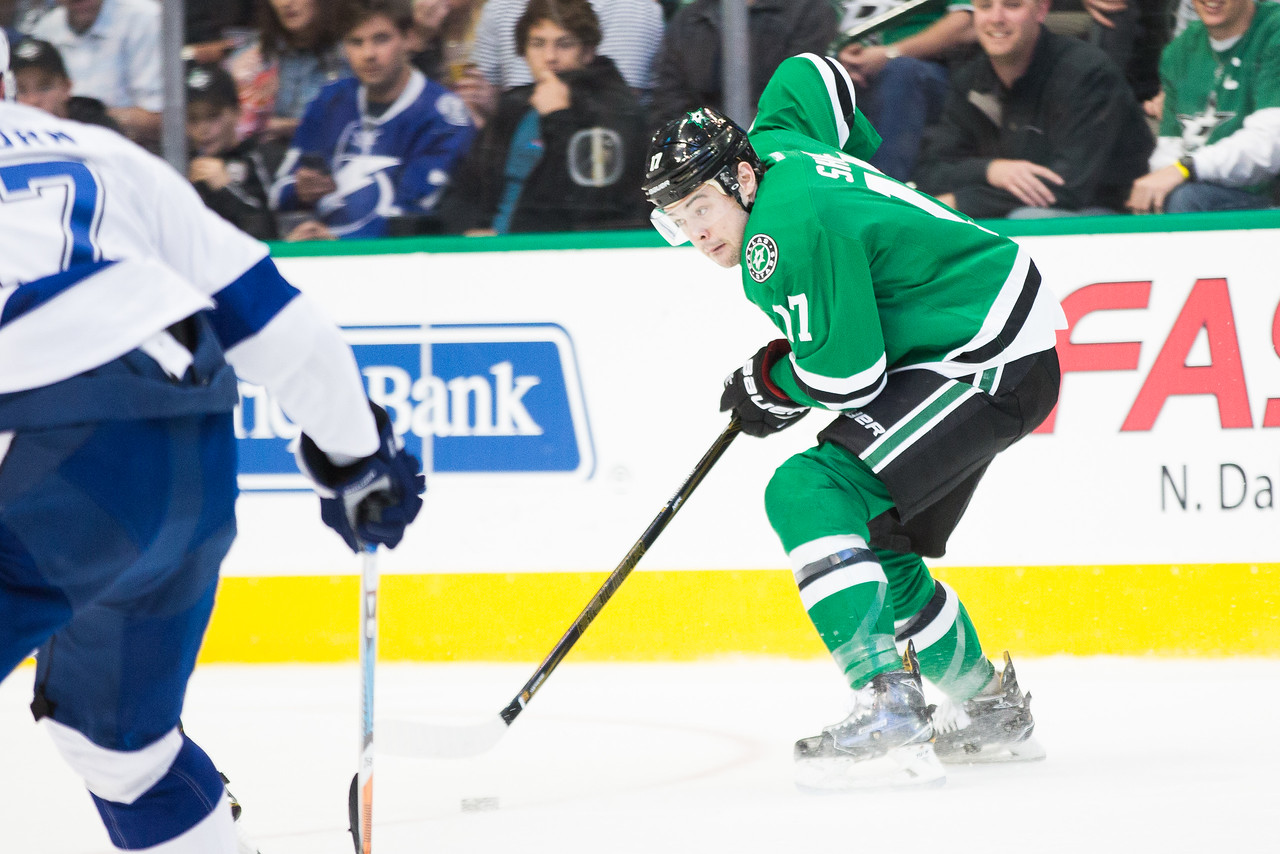Editor’s note: This is the third part of a series previewing individual players projected to make the Dallas Stars roster heading into the 2017-18 season.
Devin Shore was one of two Stars to play all 82 games last season.
For any rookie that would be a nice achievement, but for Shore it meant a bit more after his injury troubles in the prior 12 months.
Shore was arguably the AHL’s most dynamic player at the start of the 2015-16 season. He was a dominant force in all three zones and was the October Player — not rookie, player — of the Month.
He had 26 points in 23 games and even got a three-game NHL cameo before a shoulder injury ended his season. Shore then entered training camp hoping to win an NHL job, but dealt with an injury in training camp and was essentially forced to win his NHL roster spot in the final regular season game.
It ended up working out well for Shore. While the Stars struggled throughout the season he was given a chance to grow with his mistakes and he turned into an effective two-way NHL forward.
After being a scorer in the AHL he had 33 points in the NHL this past season, and he could be poised for a big sophomore season under Ken Hitchcock.
Success for Shore is a lesson in the dangers of relying too heavily on analytics.
(For the record, analytics are a valuable tool. They just need to be used with context and you have to be willing to consider outside factors).
Shore had a corsi-for percentage this season of 47.80 percent in five-on-five situations according to Puckalytics.com. It was the second-worst showing on the team (Gemel Smith was at 47.16 in 17 games).
In simple terms, the stats say Shore was a defensive liability. But to leave it at that is a lazy approach and you have to look at all the factors.
In fact, Shore was actually asked about that around the middle of the NHL season, and says he doesn’t pay attention to those numbers.
“I don’t look at it all. A lot of those numbers don’t represent a good or bad play, or how effective you are against shots,” Shore said at the time. “Say I turn the puck over and Korpi (Lauri Korpikoski) makes up for it and forces a bad angle shot or blocks it. Then his corsi takes a hit after a great play.”
So how did Shore perform in his own end?
Let’s take a look at the shots against when he was on the ice.
And this how the Stars shots against looked when Shore was off the ice.
When Shore was on the ice the shots again tended to come from further out and from more difficult angles. While that isn’t all his doing, he was part of the solution defensively.
“He’s a good defensive forward, he’s not in the elite group, but he is in that group you want going against the other team’s top line,” an Eastern Conference scout said. “I like what the Stars have with him.”
There is also a nice base for Shore to build on offensively after scoring 13 goals and registering 20 assists last season.
Shore isn’t an overly creative playmaker, but he understands one of hockey’s most basic rules — if you go to the net you’ll be rewarded. When carrying the puck into the zone Shore does a decent job of creating chances, like he did on this goal against the Toronto Maple Leafs.
Shore scored similar goals in the AHL at the start of the 2015-16 season, which was cut short due to injury, so there is a nice track record for the center.
Shore could play a variety of roles this season. If the Stars want to keep him at center he could anchor a fourth line with Curtis McKenzie and Adam Cracknell, while he could also play wing higher in the lineup.
Either why, it could be a so-called “breakout” year for Shore. As a fourth-liner he could provide depth scoring and be the catalyst for his own line. Higher in the lineup he could build on the talents of other players and make up for their defensive deficiencies.



Leave a Reply
You must be logged in to post a comment.